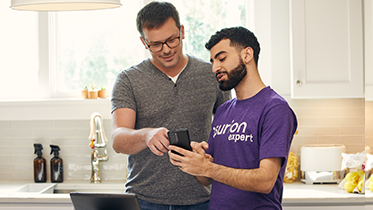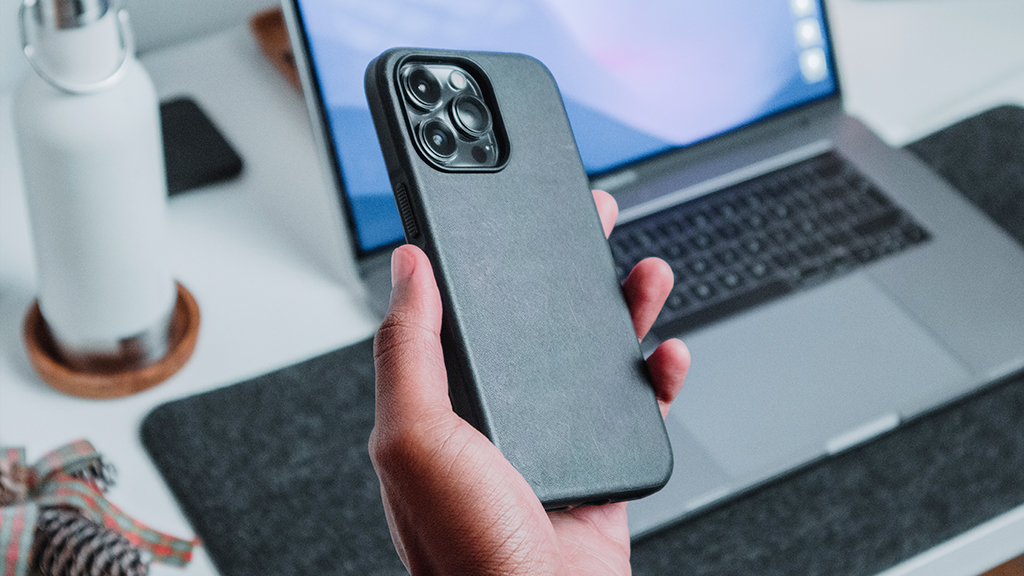“Why does my Dell laptop need updates?”
It's a question that crosses every user's mind at some point. Regular updates seem like a hassle, but they’re essential for keeping your Dell® laptop running smoothly. Whether it's securing your files, adding new features, or fixing bugs, keeping your system up-to-date can make all the difference.
The experts at Asurion know tech—including your Dell laptop. From going over all the ways you can restart your laptop to laptop repairs, we’ve got you covered. Here’s everything you need to know about keeping your Dell updated.
Before you update your Dell
Before you start any updates on your Dell laptop, it’s essential to take a few steps to make sure the process goes smoothly:
- Back up your data. Updates can occasionally cause unexpected data loss, so it's always a good idea to back up important files to an external drive or cloud storage.
- Connect to a stable power source. Updates may take some time, and losing power during the process can lead to errors. Make sure your laptop stays plugged in throughout the installation process.
- Use a stable internet connection. A reliable internet connection will help prevent interruptions while downloading updates, especially if they are large files.
Updating the operating system through Windows Update
Keeping your Dell laptop's operating system up to date is crucial for maintaining optimal performance, security, and access to the latest features. The easiest way to do this is by using the built-in Windows™ Update feature, which updates the operating system and ensures that your Dell drivers remain current.
How to update Dell laptops using Windows 11:
- Open the Start menu and select Settings.
- Go to Windows Update > Check for updates. Windows will search for available updates for the system and Dell drivers. If an update is available, click Download and install.
- Restart your Dell laptop to complete the update.
How to update Dell laptops using Windows 10:
- Open the Start menu and select Settings.
- Choose Update & Security > Windows Update > Check for updates. Windows will look for updates for both the system and Dell drivers. If updates are available, click Download and install.
- Restart your Dell laptop to finalize the update.
Updating Dell drivers manually
Your Dell laptop uses drivers to communicate between its hardware and operating system. Regular updates can prevent bugs or compatibility issues with drivers and improve performance. Normally, your laptop updates the driver and operating system when software updates occur. However, you can uninstall, reinstall, and search for updates via the Dell support website if you need to.
How to uninstall and reinstall drivers on your laptop
If the software update doesn't find a new driver update after updating your operating system, you can try uninstalling and reinstalling it.
- Type "device manager" in the search box on the taskbar, then select Device Manager.
- Right-click the name of the driver, and select Uninstall.
- Then restart your laptop. Windows will reinstall the driver during start up.
How to update drivers on the Dell Support site
- Go to the Dell Support website.
- Enter your Dell service tag or select your product model to find compatible drivers.
- Click Check for Updates.
- Select the drivers you need to update, then click Download.
- After the driver installation file downloads, open the installer and follow the on-screen instructions. Once the installation finishes, restart your laptop to make sure the drivers are properly updated.
Updating the Dell software
In addition to the operating system and drivers, it's also essential to keep Dell-specific software, like Dell Update or Dell SupportAssist, up to date. These programs help manage system performance, update drivers, and run diagnostics.
Type “SupportAssist” into the search bar on your laptop’s taskbar. If your laptop has the program downloaded, you can follow these steps to update your laptop:
- Open SupportAssist.
- Go to Drivers and Downloads.
- Click Run Now. If updates are available, click the Install button to download and apply them.
- After the installation is complete, restart your laptop.
Tech is expensive. Protect it all.
Protect the devices your family loves and relies on with one simple plan. With Asurion Home+®, we cover your computers, TVs, tablets, premium headphones, smart devices, and so much more—plus, 24/7 live support for your tech care needs. Learn more about Asurion Home+® coverage and how you can get peace-of-mind electronics protection.



